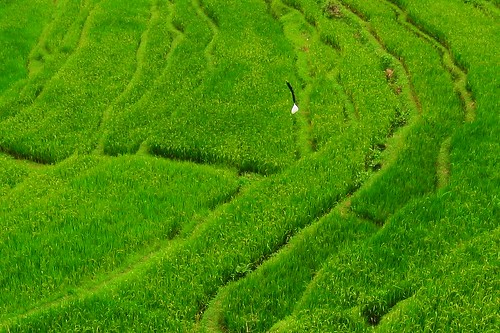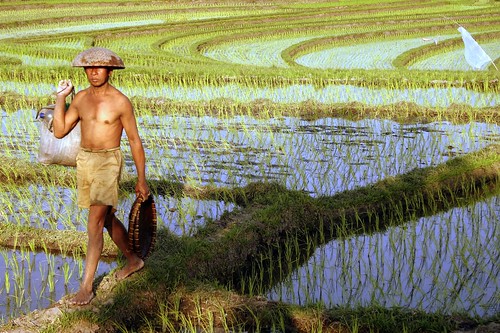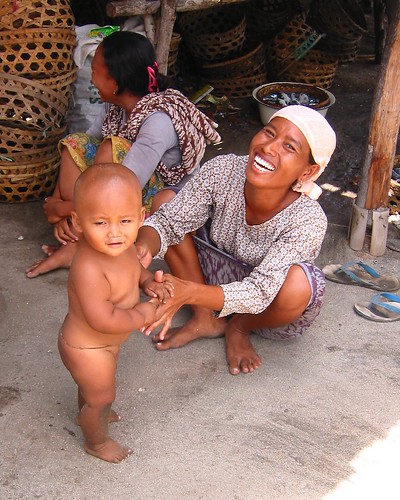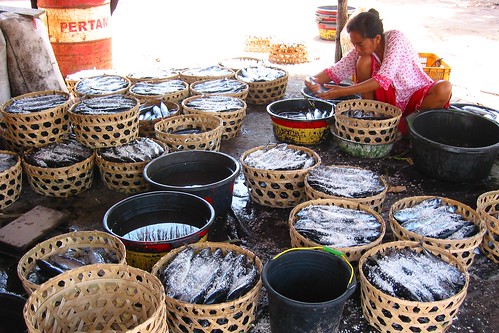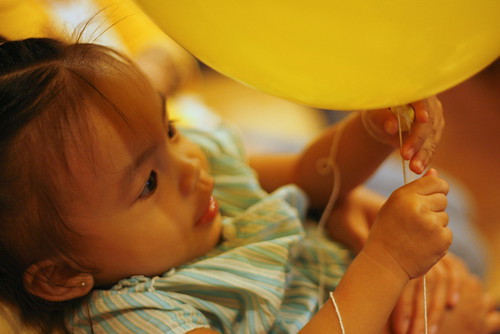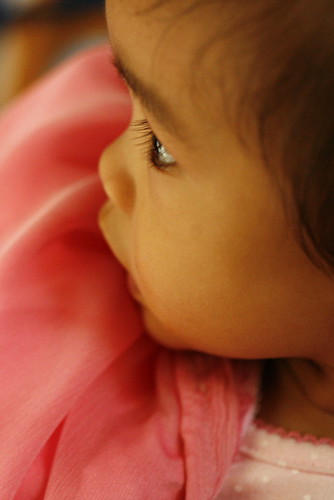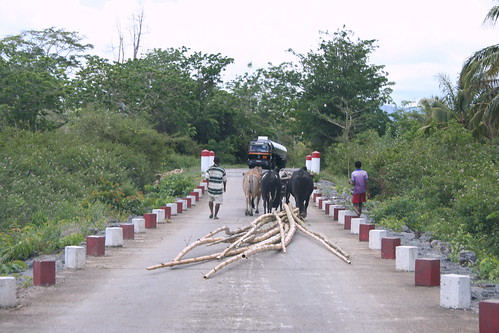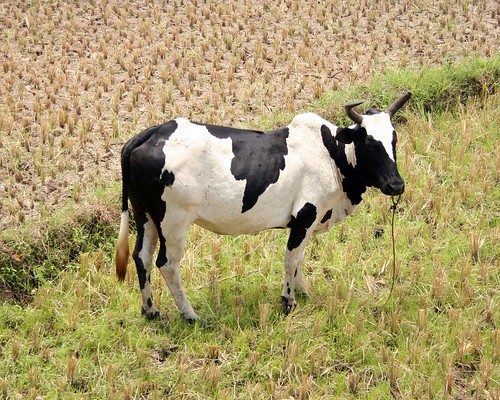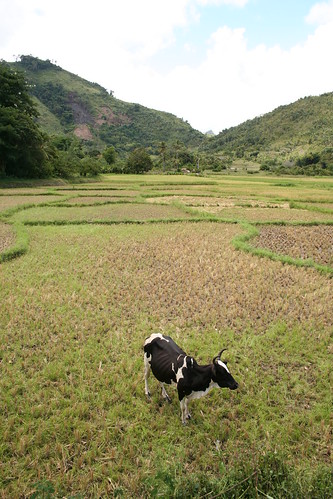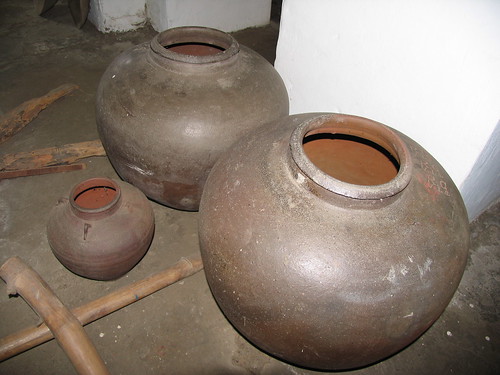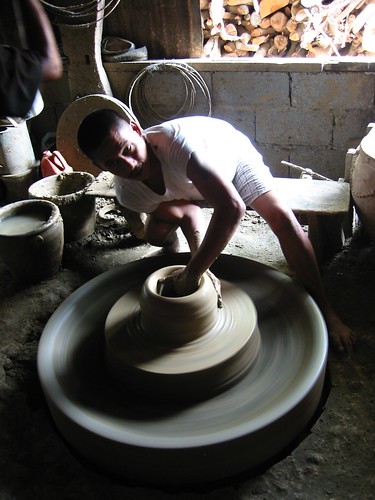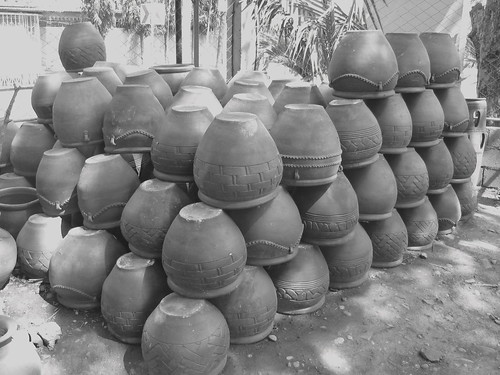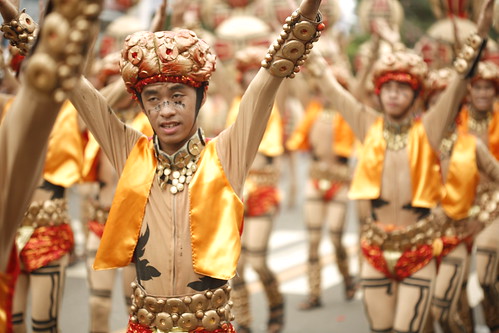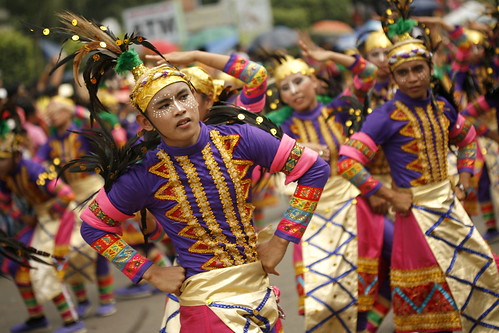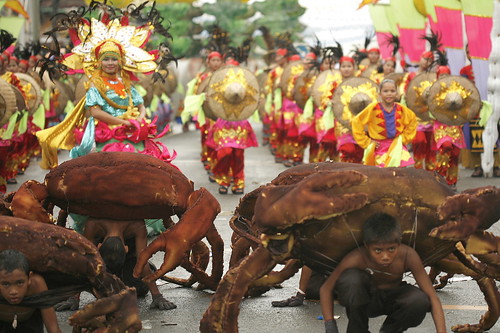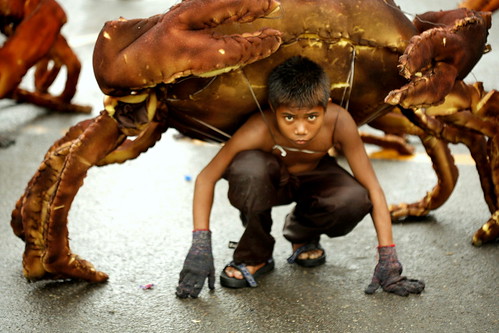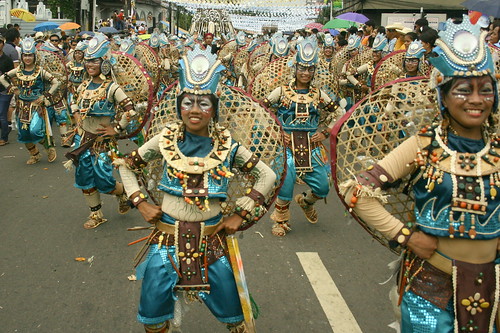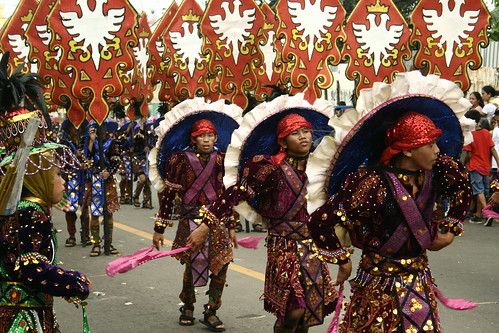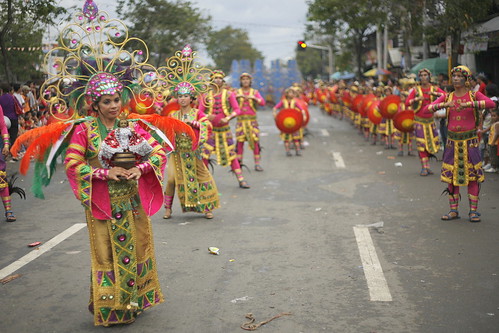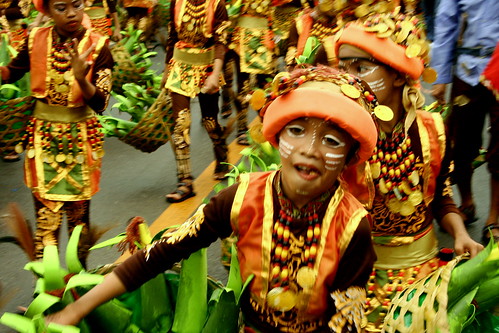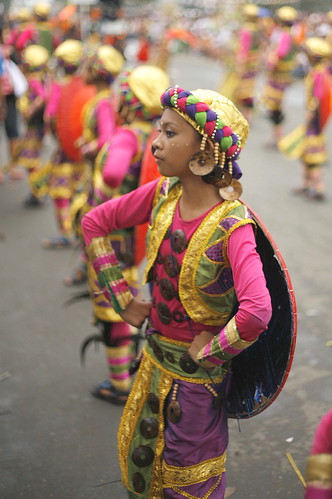What is a Sinulog blog without an album of beautiful ladies? Beauty spotting is a photographic sport and there is nothing like the Sinulog to bring in a multitude of Filipinas who bring charm and allure to the festival. Best of all, they are there for the show, willing to be put under the looking glass. For once, we can photograph them with impunity.
Sinulog 2009 Festival Queen and her Court
A relatively new tradition, the Sinulog Festival Queen competition is unique for it is a pageant only for lead dancers of a contingent participating in the street parade. Wearing the most outlandish and humongous of dresses reminiscent of international beauty contest’s National Costumes, the lead dancers are presented in a showdown of dancing prowess and wit. Winning this year’s competition is a a winsome lass from Tangub, Misamis Occidental followed by representatives of Dulag, Leyte and Sta Catalina, Negros Oriental.
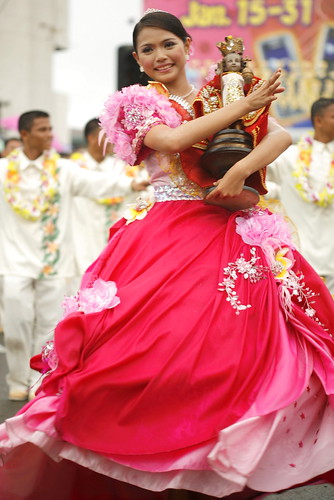
Iris Mae Linganay of Sinanduloy Cultural Troupe, Tangub City, Misamis Occidental- Sinulog 2009 Festival Queen
Canon EOS 5D Digital, 1/160s, f/2.8, 100mm, ISO 50, +2/3EV
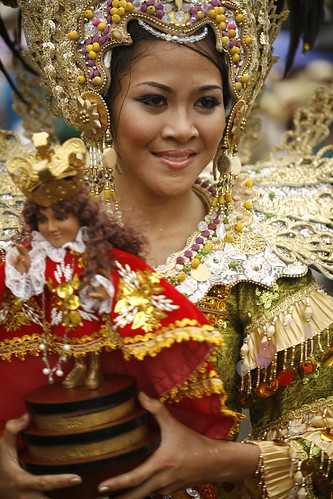
Ariane May Briones of Tribu Karatong, Dulag, Leyte- Sinulgo 2009 Festival Queen 1st Runner-up
Canon EOS 5D Digital, 1/100s, f/5.6, 55mm, ISO 50, +2/3EV

Alfe Marie Nathaniel Uy of Pakol Festival of Sta Catalina, Negros Oriental and Sinulog 2009 Festival Queen 2nd Runner-up
Canon EOS 350D Digital, 1/800s, f/5.6, 55mm, ISO 400
more lead dancers of the contingents
I’ve always wondered why is it that the star dancer chosen among a bevy of performers also happen to be not just the most graceful but also the most gorgeous? Does nature automatically grant terpsichorean skill to the beautiful?
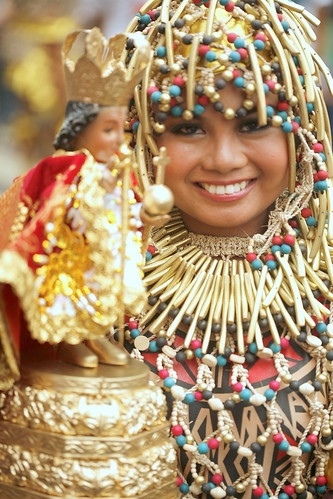
the lead dancer of Lumad Basakanon, Cebu City
Canon EOS 5D Digital, 1/125s, f/2.8, 100mm, ISO 50, +1/3EV
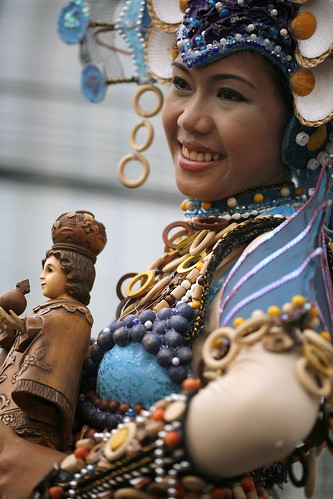
the lead dancer of Tribu Kabatok of Tacloban City, Leyte
Canon EOS 5D Digital, 1/400s, f/2.8, 100mm, ISO 50, +1/3EV
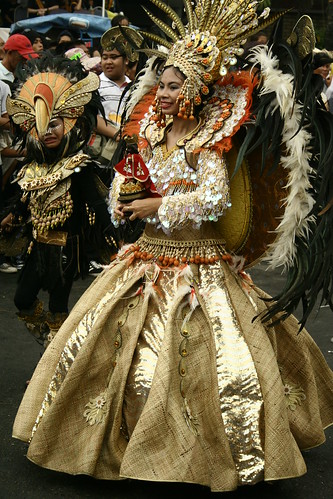
the lead dancer of Karasikas Performing Arts Guild of Borongan City, Samar
Canon EOS 350D Digital, 1/400s, f/5.6, 55mm, ISO 400, +1/3EV
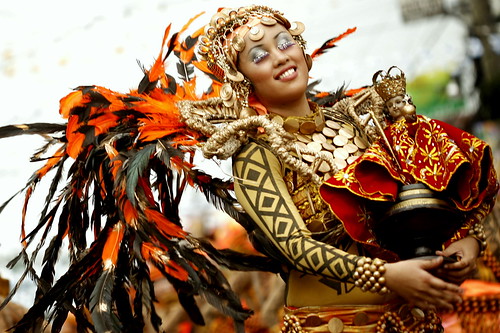
the lead dancer of Tribu Buyogan of Abuyog, Leyte
Canon EOS 5D Digital, 1/160s, f/2.8, 100mm, ISO 50, +1/3EV
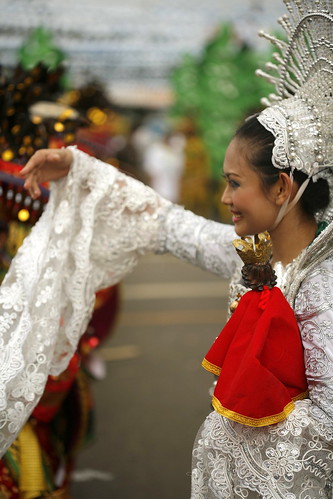
the lead dancer of Lanao del Norte
Canon EOS 5D Digital, 1/400s, f/2.8, 100mm, ISO 50, +2/3EV
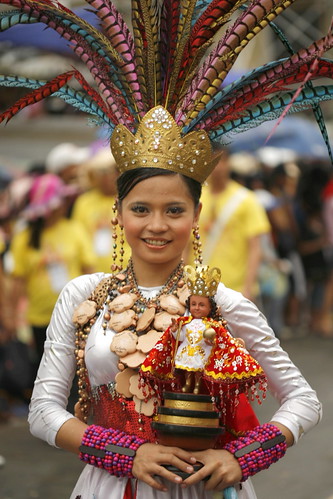
the lead dancer of the Cebu City guest contingent (?)
Canon EOS 5D Digital, 1/200s, f/2.8, 100mm, ISO 50, +1/3EV
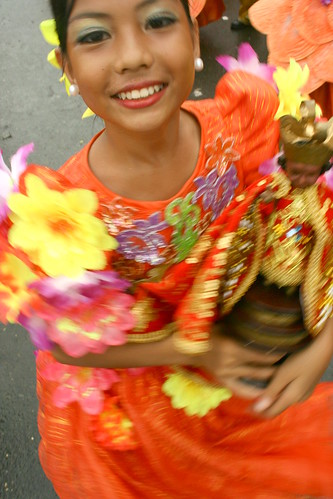
the lead dancer of Pajo Elementary School, Lapu-Lapu City
Canon EOS 350D Digital, 1/50s, f/13, 22mm, ISO 400, -1/3EV

the lead dancer of Lahug Elementary School
Canon EOS 350D Digital, 1/30s, f/9.0, 18mm, ISO 200
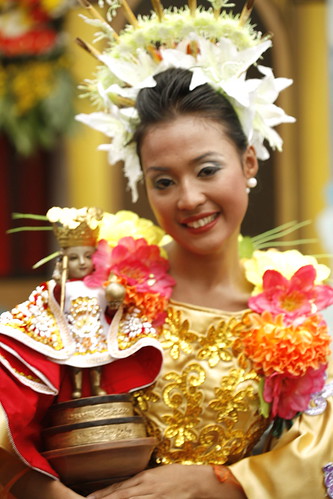
lead dancer of Tribu Magrararug of Punta Princesa Elementary School
Canon EOS 5D Digital, 1/50s, f/3.2, 100mm, ISO 50, +1/3EV
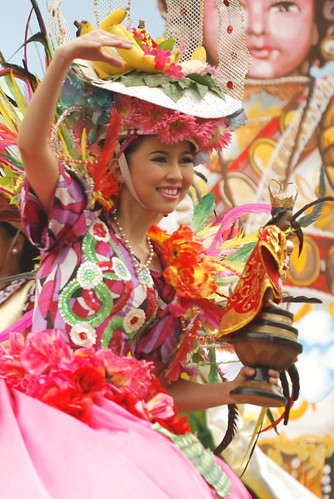
a lead dancer of one of the contingents
Canon EOS 5D Digital, 1/400s, f/2.8, 100mm, ISO 50, +4/3EV
choice dancers
Among the numerous dancers of a contingent, a few also stood out. Charisma, after all, cannot be hidden for long.
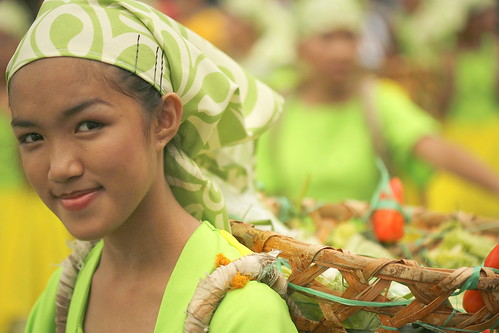
a dancer of Kawayan Elementary School of Dalaguete
Canon EOS 5D Digital, 1/800s, f/2.8, 100mm, ISO 50
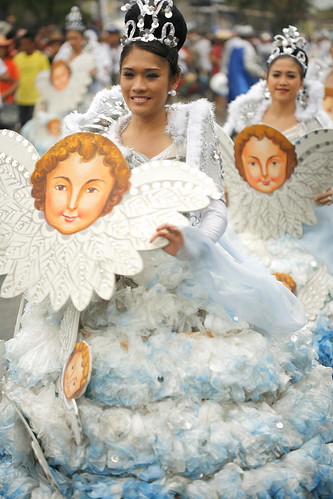
a member of the San Diego Dance Company
Canon EOS 5D Digital, 1/160s, f/2.8, 100mm, ISO 50, +2/3EV
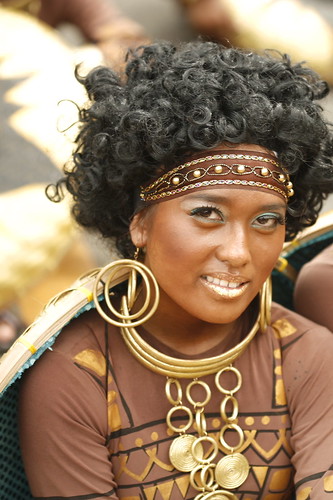
a member of contingent from the Municipality of Carmen
Canon EOS 5D Digital, 1/160s, f/2.8, 100mm, ISO 50, +2/3EV
the Sinulog 2009 series includes
the Sinulog Saturday procession and fireworks
Sinulog 2009 grand street parade part 1 (winners),
part 2 (the Sinulog-based contingents)
part 3 (the Free Interpretation contingents), and
the Sinulog beauties


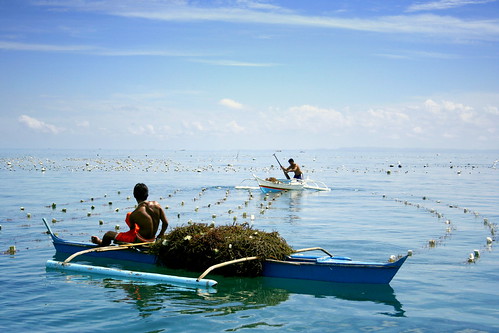

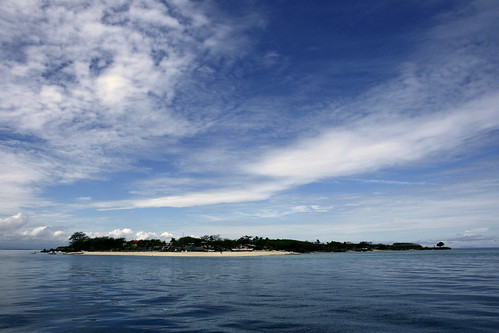






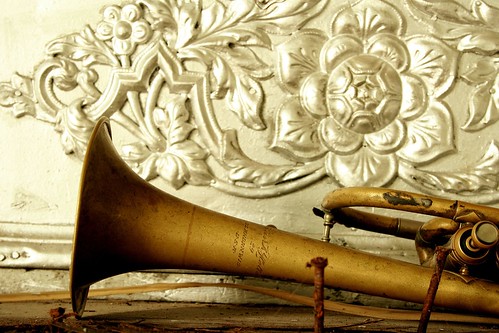

![padi [2]](http://farm1.static.flickr.com/109/308502267_0b1534752e.jpg)
